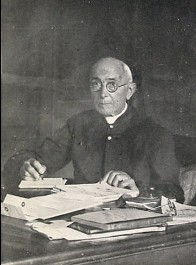Civico Museo Archeologico di Bergamo
You can
travel in the footsteps of the Celts, Romans and Longobards who built Bergamo by
visiting the Civic Archaeology Museum to see the wealth of artefacts that have
been uncovered over the centuries in the city and the surrounding area.The museum is housed in a 14th century
palace in Piazza della Cittadella
Items dating
back to the Neolithic period in prehistoric times reveal Bergamo’s ancient
origins. Stone axes, iron swords, Celtic bronze ornaments and Longobard gold
crosses are among the items on display in the museum. Bergamo’s Roman period is
particularly well represented with a wealth of sculptures, inscriptions, tomb
stones and funerary items.
The Civic Archaeology
Museum is now housed in a 14th century palace in Piazza della Cittadella in the Città Alta, but its collection dates back as far as 1561, when Bergamo’s Great
Council established ‘a collection of antiquities’ for people to view in the
loggia under Palazzo della Ragione in Piazza Vecchia in the Città Alta.
The original
display of artefacts has increased hugely over the centuries thanks to the many
valuable items that have been unearthed locally and donated to the collection and
the museum has had to move to many different locations in the city as it kept
requiring more space.
A special
publication registering the most notable archaeological discoveries in the care
of the museum was published in 1900 by Professor Gaetano Mantovani. All the important
finds were gathered together in the 1930s and given a home in the Rocca
fortress, where they were kept safe during World War II. .png)
The museum has collections of artefacts from
many periods of history unearthed locally
The
collection was moved in 1960 to its present location, where it now occupies the
ground floor of a palace built in the 14th century by the Visconti family.
Milan’s ancient rulers, in Piazza Cittadella.
There are
rooms displaying prehistoric, bronze age, Iron age, gallic and Longobard items.
There is plenty of evidence from the Roman period in Bergamo, with an important
collection of funerary epigraphs from the area. There are rooms devoted to the
city’s history from the early urban settlement of the fifth century BC to the
Roman city becoming a municipium in the age of Caesar- Augustus. Artefacts from
the Longobard duchy in the early Middle Ages include fascinating examples of the
pieces of armour worn by soldiers at the time.
The museum
is open between October and December from 9.00 to 13.00 and 14.00 to 17.00
Thursday and Friday and from 10.00 to 13.00 and 14.00 to 17.30 on Saturday and
Sunday.
The entrance
ticket is three euros and the ticket is also valid for entry to the Natural Science
Museum, also in Piazza della Cittadella.
.PNG)















